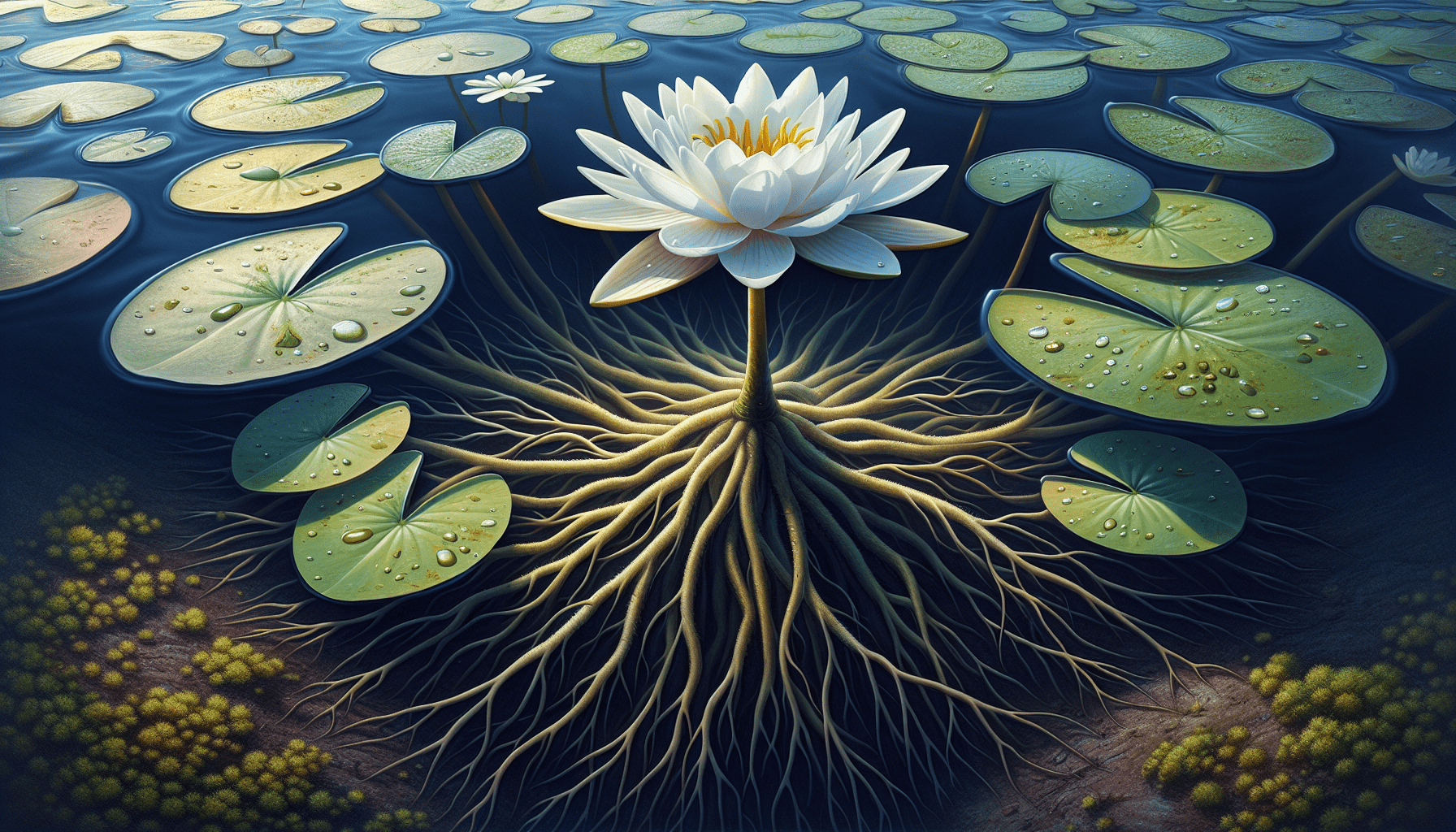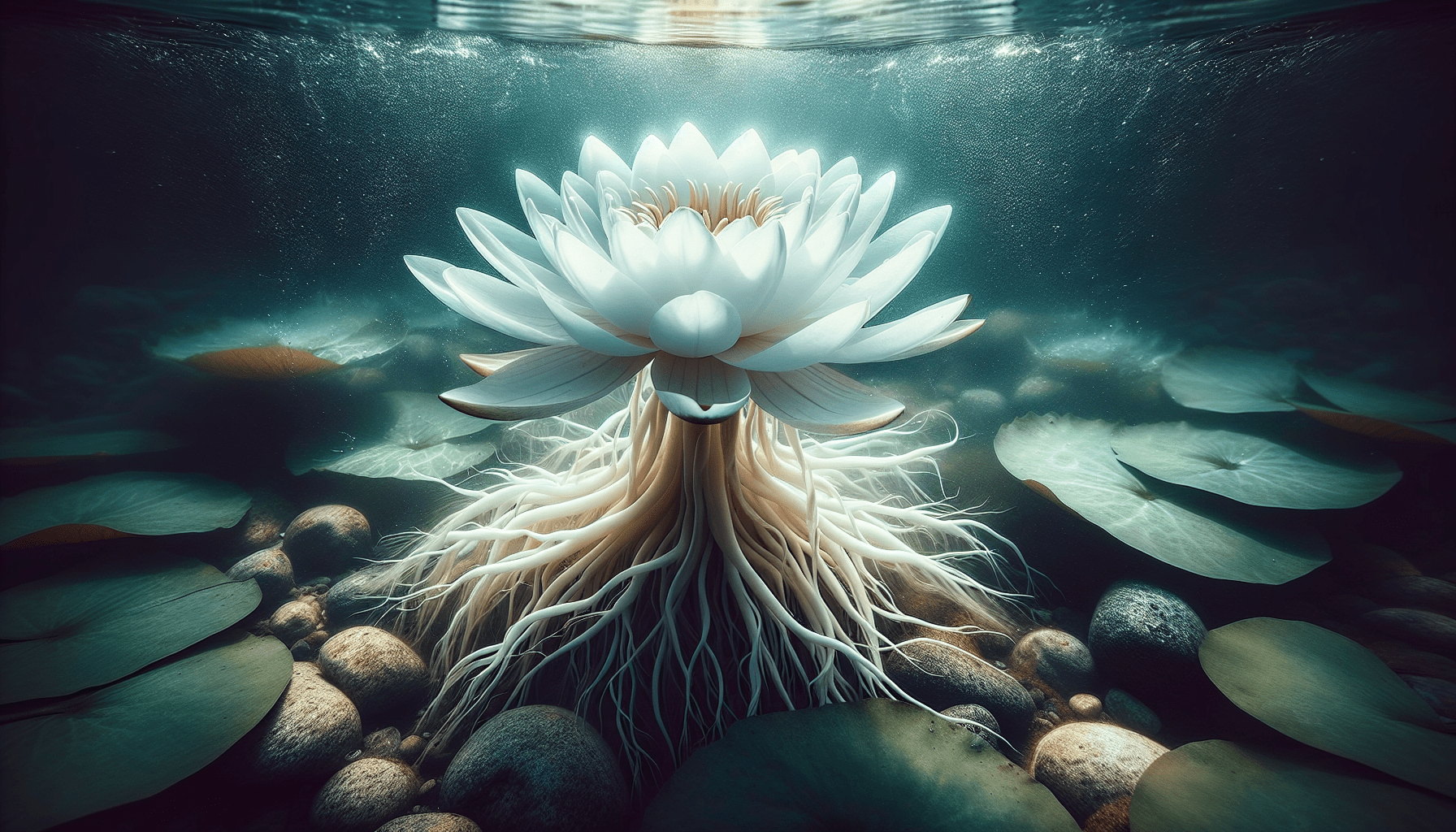As you venture into the intriguing world of aquatic plants, you may come across a unique species known as Nymphaea odorata; a name enticing as it mirrors the peculiarity of the plant itself. This paper sets out to offer an in-depth analysis and comprehensive understanding of the cadence of its existence. This intricate aquatic weed, also known as the American white water lily, or fragrant water lily, beckons your curiosity with its delicate yet strong character, pervading the freshwater landscape with a significant presence that contributes to a variety of ecological functions. Prepare yourself for a fascinating journey as the voluptuous bloom of information about Nymphaea odorata unfolds.

Overview of Nymphaea Odorata
Nymphaea odorata, commonly known as the fragrant water lily, is a species with a rich scientific and historical background, harboring various common names and synonyms worldwide.
Scientific Classification and Nomenclature
This perennial aquatic herb belongs to the family Nymphaeaceae under the order Nymphaeales. Its genus, Nymphaea, originated from Greek mythology, symbolizing the nymphs of springs, brooks, and streams, thus illustrating its strong tie to water habitats. In contrast, its epithet, ‘odorata,’ denotes the plant’s intriguingly fragrant nature.
Common Names and Synonyms
Aside from the widely known term ‘fragrant water lily,’ Nymphaea odorata is also conversely known as American white waterlily, sweet-scented white waterlily, and beaver-root, depending on the region. Pertaining to the scientific domain, the plant’s synonyms include Nymphaea odorata var. tuberosa and Nymphaea tuberosa var. odorata.
Historical Background
A native to North America, the presence of Nymphaea odorata within the annals of history is significant, particularly within Native American cultures. Traditionally, it has served multiple purposes, varying from medicinal applications to food resources, with a robust immersion in folklore and spiritual traditions.
Physical Characteristics of Nymphaea Odorata
The distinct characteristics of Nymphaea odorata revolve around its engaging leaves, flowers, and seeds, which exhibit variants in color and size.
Description of Leaves
The leaves of this water lily are peltate, meaning they connect to the stalk at the center rather than the edge, and grow up to 30 centimeters across. Their upper surfaces are typically bright green with smooth, glossy textures, while the undersides may range from solid purple to green with purple blotches.
Details of Flowers and Seeds
Flowering from June to September, Nymphaea odorata possesses blossoms spanning from 7 to 20 cm in diameter. These flowers, which typically rest on the water surface, have numerous white petals and yellow stamens. Their seeds are tiny, elongated and packed densely within a spongy and berry-like fruit.
Variations in Color and Size
While the standard Nymphaea odorata exhibits white flowers, color variations exist. Some boast pink flowers, while others may evolve into light shades of purple or cream. Typical individuals achieve a spread of up to 2 meters, although size can fluctuate based on environmental conditions.
Habitat and Distribution of Nymphaea Odorata
Nymphaea odorata thrives in distinct natural habitats and displays a wide geographical distribution, with particular environmental preferences.
Natural Habitats
Manifesting an affinity for wet habitats, Nymphaea odorata commonly inhabits sluggish streams, ponds, and lakes. The water lily can withstand a wide range of water depth—the leaves float on the surface in shallow water, but in deeper water, the plant produces submerged leaves.
Geographical Distribution
As a North American native, Nymphaea odorata is extensively spread across the United States and Canada. Its distribution spans from the northeast to the central and southern regions of these territories.
Environmental Preferences
Growing best in full sun to partial shade, the fragrant water lily is flexible in its tolerance, surviving pH levels from 6.1 to 7.5 and temperatures between 15 to 30 degrees Celcius. However, the water conditions greatly influence its development and distribution, with a preference for slow-flowing or stagnant freshwaters.

Life Cycle of Nymphaea Odorata
A perennial, Nymphaea odorata sports a fascinating life cycle featuring distinct growth stages, seasonal changes in appearance, and a unique reproductive process.
Growth Stages
Nymphaea odorata emerges from sturdy, fleshy rhizomes. In each growth cycle, the plant produces both floating and submerged leaves, which in turn give rise to distinctive white, fragrant flowers that close at night and reopen in the morning.
Seasonal Changes in Appearance
Nymphaea odorata undergoes dramatic seasonal transformations. During winter dormancy, the plant withdraws energy to its rhizomes, causing established leaves to die off. When spring arrives, new leaves unfurl from the rhizome and ascend to the surface, followed by the emergence of flowers in the summer.
Reproductive Process
Reproduction in Nymphaea odorata involves a complex interaction between flower, water, and pollinators. The flowers open in the morning to attract bees, beetles, and flies, which assist in transferring pollen. Afterwards, the flowers retreat under the water surface to facilitate seed maturation.
Role of Nymphaea Odorata in Ecosystem
This quintessential lily pad extends multiple benefits to its ecosystem, interacting with aquatic fauna, impacting water quality, and enriching biodiversity.
Interactions with Aquatic Fauna
As a cornerstone species in the aquatic ecosystem, Nymphaea odorata acts as a shelter, food source, and breeding ground for aquatic animals, including various invertebrates, fish, and amphibians. The submerged portions offer secure nesting spaces, while leaves and flowers provide landing pads for dragonflies and damselflies.
Effects on Water Quality
By shading water and minimizing sunlight penetration, Nymphaea odorata aids in water temperature and light regulation, consequently improving water quality by inhibiting algal growth.
Contribution to Biodiversity
Nymphaea odorata increases biodiversity by providing food and habitat for numerous species. In addition, it helps in soil stabilization and nutrient cycling, enhancing overall ecosystem health.
Cultivation and Care for Nymphaea Odorata
Cultivating Nymphaea odorata involves understanding its planting requirements, predicting and managing growth patterns, and safeguarding against common diseases and pests.
Planting Conditions and Requirements
For optimal growth, Nymphaea odorata prefers nutrient-rich sediments in shallow, calm waters. Although it tolerates various pH levels, calibrated water treatment may be necessary for extreme pH environments.
Predicting and Managing Growth
Although this perennial herb can proliferate rapidly in favorable conditions, pruning excess buds and managing the rate of leaf production can control its growth. Maintaining a proper balance of planting density to water surface area is crucial to prevent overcrowding.
Common Diseases and Pests
The fragrant water lily is susceptible to pests and diseases such as aphids, crown rot, and leaf spot. Employing integrated pest management strategies, including the introduction of pest predators or application of approved pesticides, is instrumental in mitigating these threats.
Uses of Nymphaea Odorata
Nymphaea Odorata has multifarious uses in landscaping, traditional medicine, and industrial applications.
Use in Landscaping and Ornamental Ponds
Due to its beautiful, aromatic flowers and lush foliage, Nymphaea odorata is a popular choice for landscaping in ornamental ponds, lakes, and water gardens.
Role in Traditional Medicine
Historically, indigenous cultures have utilized Nymphaea odorata for medicinal purposes, including as a tranquillizer, antiseptic, and astringent. The roots and seeds also serve as food sources for various cultures.
Potential Industrial Applications
Although research is ongoing, Nymphaea odorata shows promise in the pharmaceutical and cosmetics industry due to its potential antioxidant, antimicrobial, and anti-inflammatory properties.
Potential Threat of Nymphaea Odorata as an Invasive Species
Despite its ecological significance, when located outside its native distribution, Nymphaea odorata can prove invasive, invoking detrimental effects on local ecological communities.
Invasion Scenarios
Often introduction occurs through deliberate or accidental dispersion, where it establishes itself within non-native aquatic environments. Its rapid growth and ability to outcompete natives make it a formidable invader.
Impacts on Native Species and Ecosystems
As an invasive species, Nymphaea odorata may monopolize resources and space, disrupt local biodiversity, and even modify aquatic habitats, causing detrimental shifts within the affected ecosystem.
Management Strategies for Invasive Populations
For invasive Nymphaea odorata populations, management strategies include mechanical removal, the use of aquatic herbicides, and biotic control with herbivorous insects or fish. Yet, prevention through stringent monitoring and responsible plant use remains the most effective solution.
Research and Studies on Nymphaea Odorata
Several explorative studies and research have pursued understanding Nymphaea odorata, shedding light on its various attributes and potentials.
Latest Discoveries about Nymphaea Odorata
Recent research has identified numerous chemical constituents, including alkaloids, flavonoids, and sterols, in Nymphaea odorata, explaining its various medicinal properties.
Ongoing Researches
Ongoing research delves into the plant’s ecological impact, potential pharmaceutical applications, and its global conservation status, among various facets.
Possible Future Studies
Future studies could explore the plant’s genetic diversity, its potential in phytoremediation, and the influences of climate change on its distribution and plant behavior.
Preservation and Conservation of Nymphaea Odorata
The preservation and conservation of Nymphaea odorata are crucial, entailing the recognition of its ecological significance, the implementation of conservation strategies, and promoting successful conservation stories.
Importance of Conservation
Conserving Nymphaea odorata safeguards the rich biodiversity supported by this plant. It forms a dominant component of cultural heritage in many societies and serves as an indicator of healthy aquatic ecosystems.
Existing Conservation Strategies
Currently, conservation strategies are primarily location-specific and focus on maintaining the plant’s natural habitats. These may include habitat protection, zero-tolerance policies against habitat destruction, and encouraging cultivation in controlled environments.
Success Stories of Nymphaea Odorata Conservation
Success stories stem from several places, where community involvement in habitat restoration has led to the reclaiming and thriving of local Nymphaea odorata populations. These generate hope for the continued survival and proliferation of this remarkable plant species.
In summary, Nymphaea odorata forms an integral component in many aquatic ecosystems, serving not only as an ornamental treasure but also as an ecological cornerstone. Its preservation is not merely about safeguarding a species, but also about maintaining the complex web of life it supports and enhances.